Product List
Contact Us
Email:qiao@hvtest.cc
Mobile:+8615871365102
What's app:+8615871365102
-
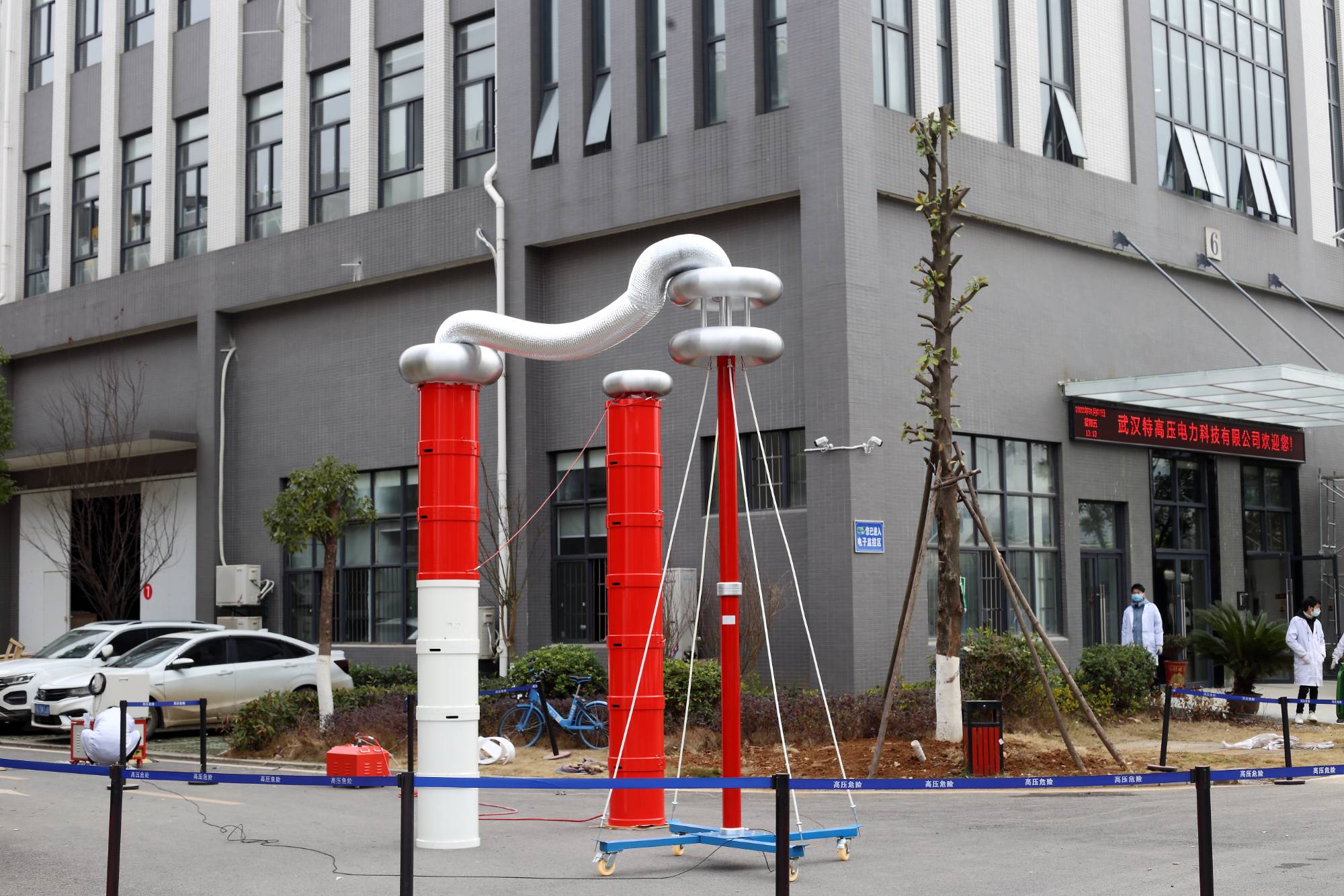
Quality factor of series resonant circuit withstand voltage test
2025-10-201. IntroductionSeries resonant devices are widely used in on-site AC withstand voltage testing of large capacity test objects such as transformers and capacitors. Several factors affecting factor quality q in series resonant withstand voltage tests were analyzed to address common issues in practical applications.2. Capacity of the test objectThe q-value is the most important parameter for evaluating a series resonant circuit. It is proportional to the power frequency f and inductance L of the high-voltage capacitor, and inversely proportional to the impedance R, where R represents the active loss of the entire circuit. In the actual power frequency series resonance test circuit, according to the formula wl=l/wc, it can be concluded that the capacitance reactance determines the inductance reactance.However, Q = wL / R。 If the test object is GIS or equipment composed of independent components, voltage withstand testing can be carried out in sections to improve capacitance and obtain high
MORE -
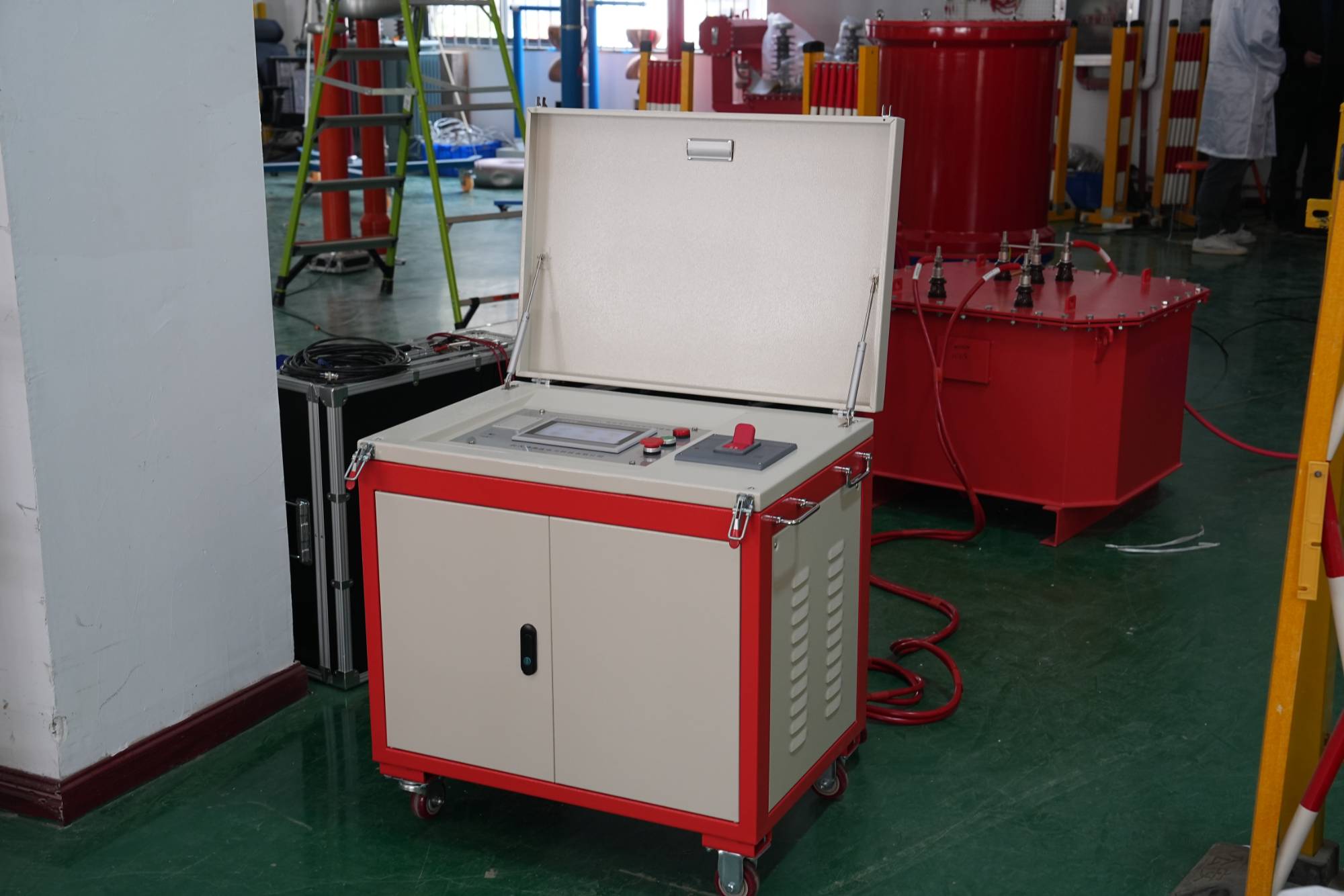
Technical principle of frequency modulation series resonance test device
2025-10-20Power frequency withstand voltage test device. Composed of accessories such as 240 kVA/200 kV~400 kV variable frequency power supply, transformer, reactor, coupling capacitor, etc. The series resonance testing device has low waveform distortion, good stability, and functions such as frequency modulation, voltage regulation, operation, protection, and control. Provided assurance for on-site partial discharge testing. However, due to different testing items, the wiring method of the FM series resonance testing device is also different. For the possible problems of large transformers in partial discharge tests, we will take 220kV and 240 transformers as an example. By analyzing and calculating to select a reasonable wiring method, the testing work is completed, thereby improving the quality and efficiency of testing, and accumulating rich experience for future work.(1) Variable frequency power supplyVariable frequency power supply is the core of the equipment. It can change the input powe
MORE -
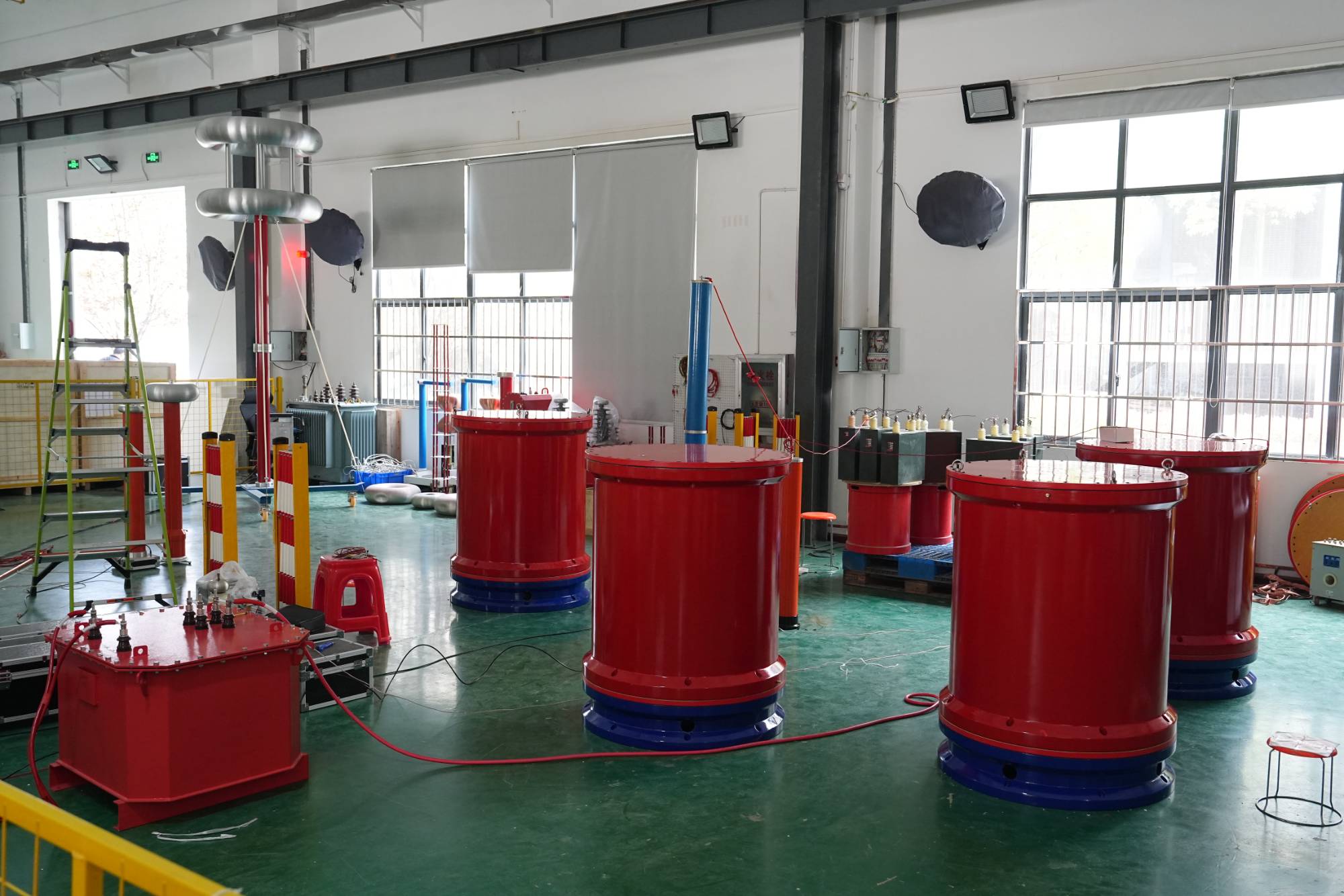
Why is a series resonant circuit called a receiver circuit
2025-10-17At resonance, the impedance of the inductor is equal to the impedance of the capacitorTherefore, ωL= 1 /ωC, Where w is angular frequency=2 π fω 2 LC = 1ω 2 = 1 / LCTherefore, during resonance, the impedance of the RLC circuit is equal to RDue to the fact that the current flowing through a series resonant circuit is the product of voltage and impedance, the impedance Z is at its minimum value (=R) during resonance. Therefore, the circuit current at this frequency will reach its maximum V/R value, as shown below.The frequency response curve of a series resonant circuit indicates that the magnitude of the current is a function of frequency. When plotted on the graph, it can be seen that the response starts from near zero, reaches its maximum at the resonant frequency when I MAX=IR, and then decreases again to near zero as ƒ becomes infinite. The result is that even during resonance. But the amplitude of the voltage C across the inductor L and capacitor C can be many times greater than the
MORE -
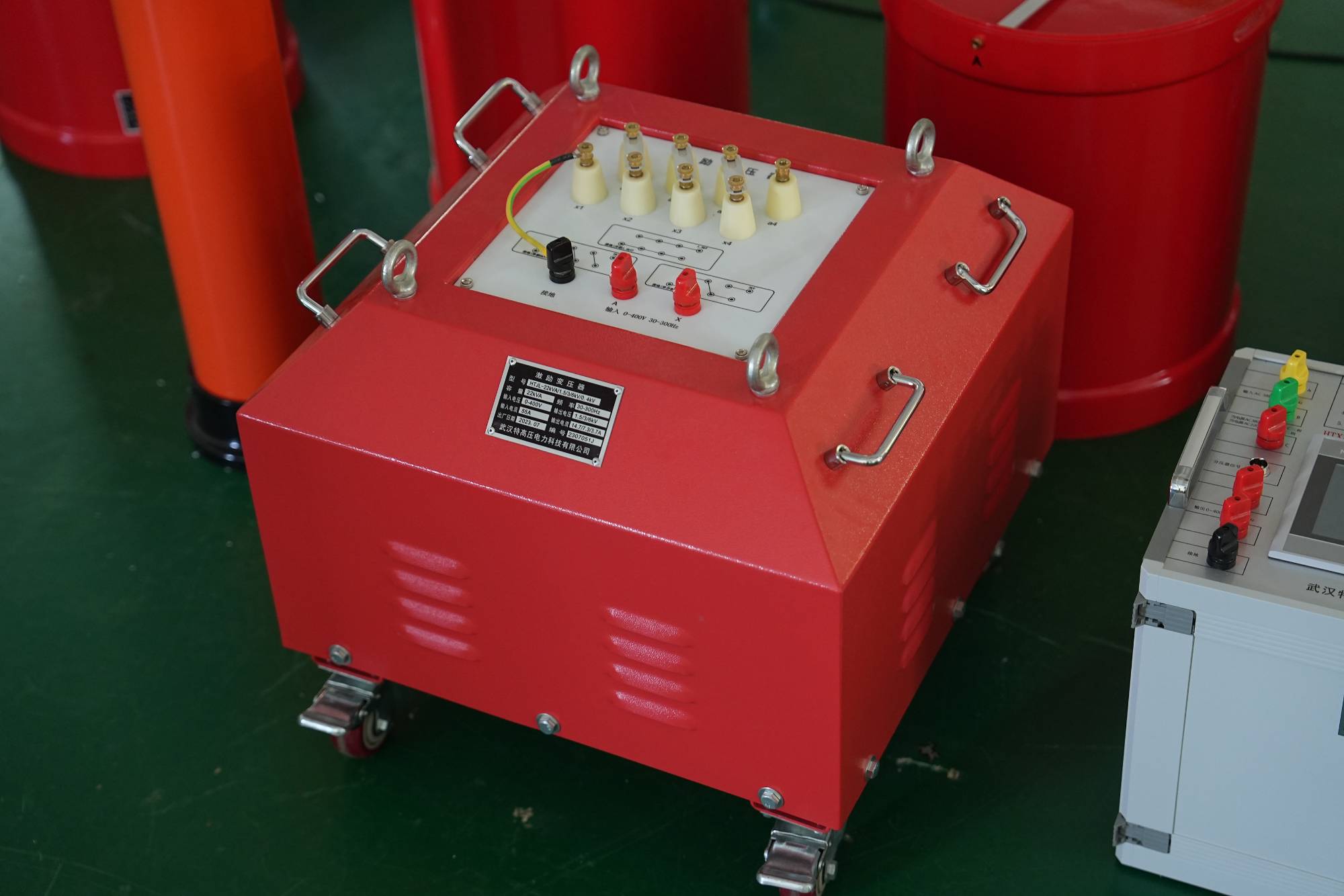
Rubber plastic series resonant AC withstand voltage test
2025-10-17Years of operational experience both domestically and internationally have shown that DC withstand voltage testing is not suitable for the handover or preventive testing of rubber plastic power wires. Instead, AC withstand voltage testing (frequency range 30-300hz) should be used to ensure safe movement. Cable. This is a groundbreaking change in the development history of preventive testing for power equipment. However, the DC withstand voltage test is still effective for oil immersed paper insulated power wires and should continue to be used. Due to the large capacity of the wires, it is not suitable to use high-capacity power frequency test transformers on site. The advantages of frequency modulation series resonance high-voltage testing equipment are light weight and small power capacity (only 1/30~1/80 of the power capacity of the testing transformer)This testing equipment is specifically designed and manufactured for on-site AC withstand voltage testing of rubber and plastic power
MORE -
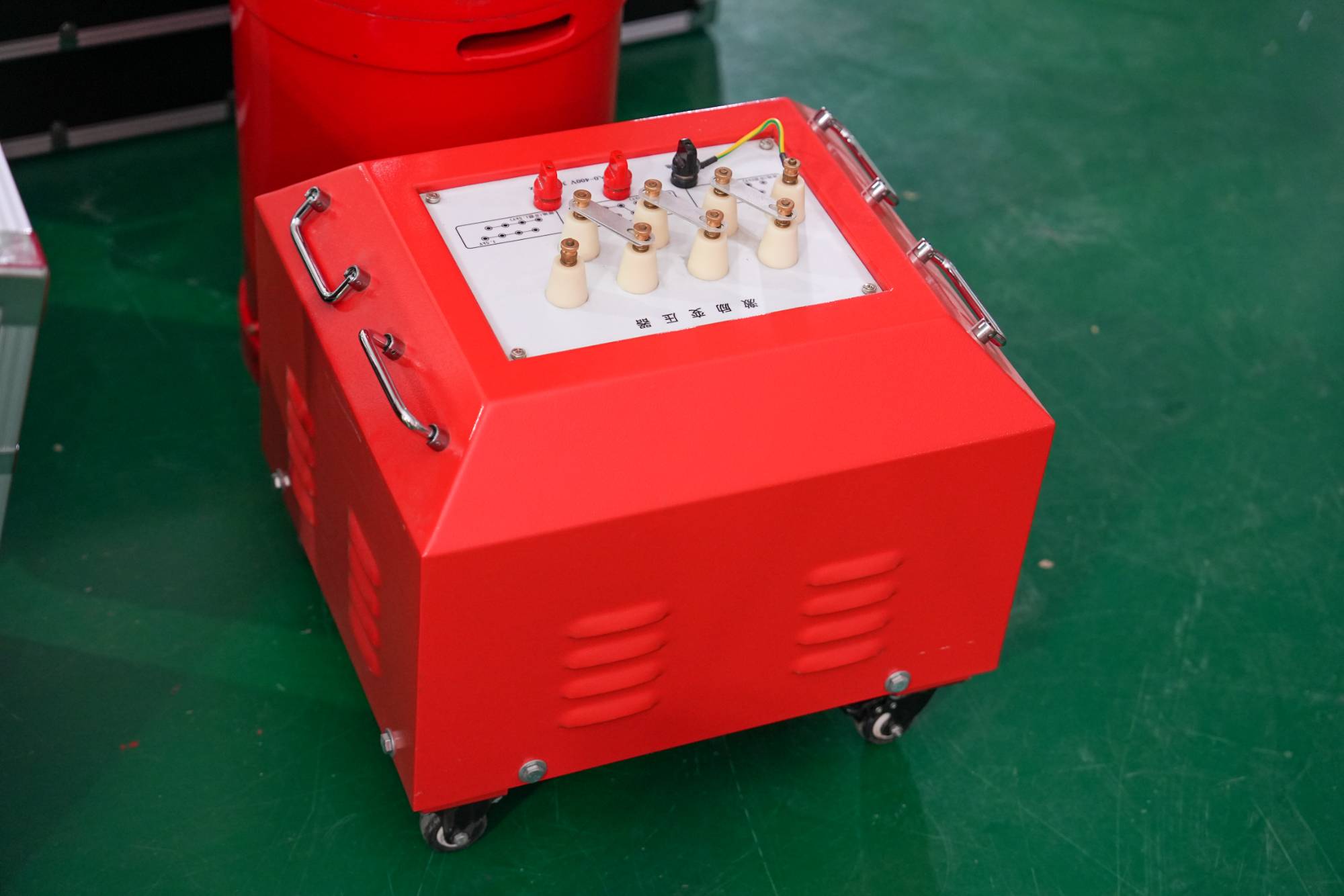
What should I do if there is a series resonance mismatch
2025-10-17First of all, let me briefly explain the function and role of series resonance devices. Series resonance is applied in power systems for insulation testing of high voltage and large capacity electrical equipment. In practical use, series resonance requires matching of capacitors and inductors. Only when the matching is good can resonance voltage be generated. So, what should be done if series resonance loses its resonance?I believe that a small number of customers may encounter such problems, and we cannot do so now. To understand the series resonance detuning, we first need to know the composition and structure of the series resonance testing device. Under a certain capacitance, the circuit can produce a resonant state by adjusting the inductance and frequency. There must be a certain parameter generation method for series resonance detuning. The common detuning phenomenon is when the cable fails during the series resonance test, and the series resonance will inevitably detune and the
MORE -
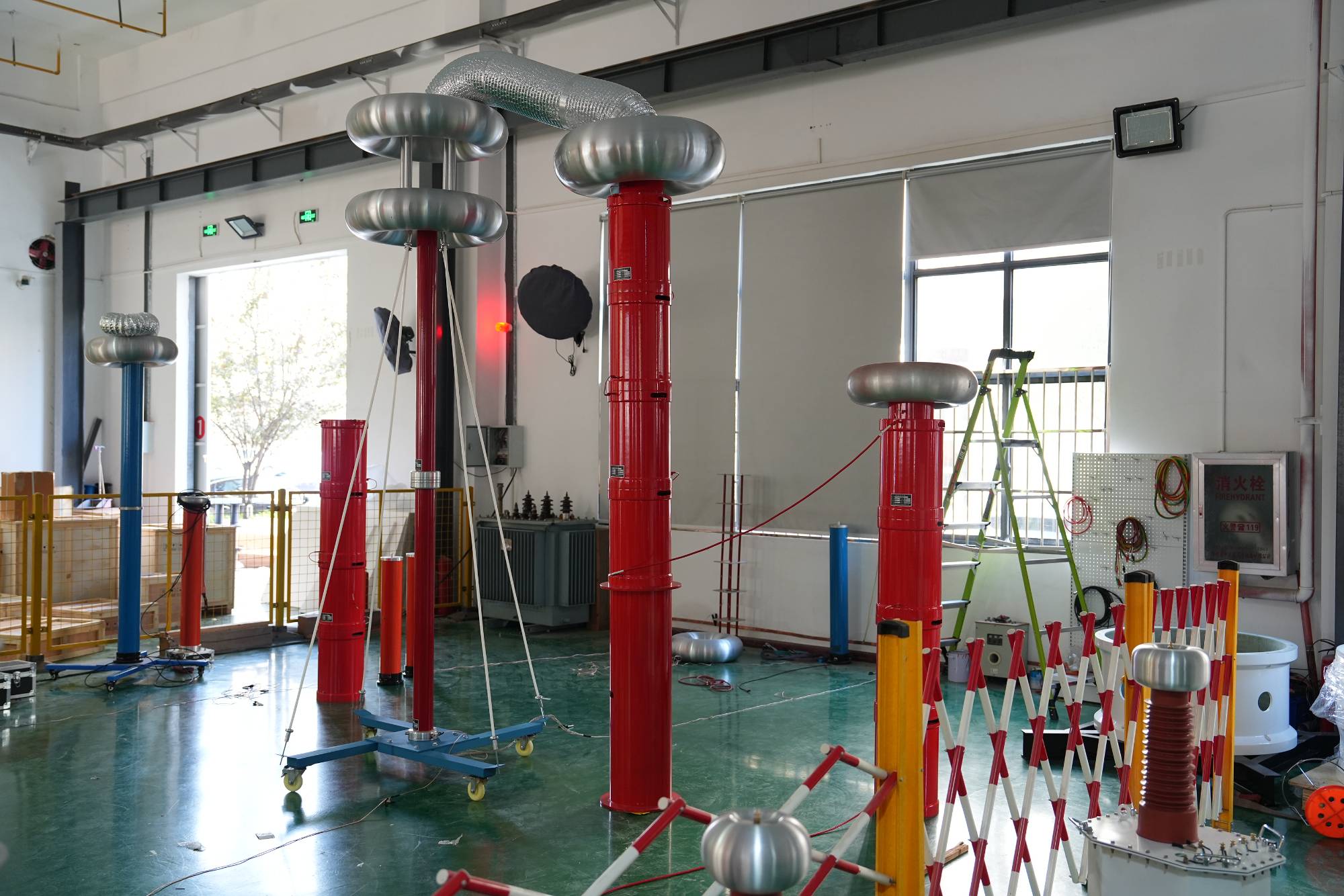
Series resonant system
2025-10-16A series resonant device is a system designed primarily for testing capacitive loads using reactive voltage and reactive power. It draws very little power from the mains, only enough to meet the losses of the testing circuit.This series of resonance testing systems is designed for high-voltage testing of capacitance testing objects. For example, power cables, generators, bushings, capacitors, transformers, and SF6 gas insulated equipment.Working Principle:The practical series resonance testing system consists of a voltage regulator, excitation transformer, high-voltage variable reactor, and capacitor testing object. The voltage regulator is connected to the power supply through a main circuit breaker, and this component provides a variable voltage to the excitation transformer, allowing the output voltage to be adjusted to a value suitable for testing.The excitation transformer provides necessary power to the high-voltage circuit composed of HV variable reactors and test objects. The e
MORE -
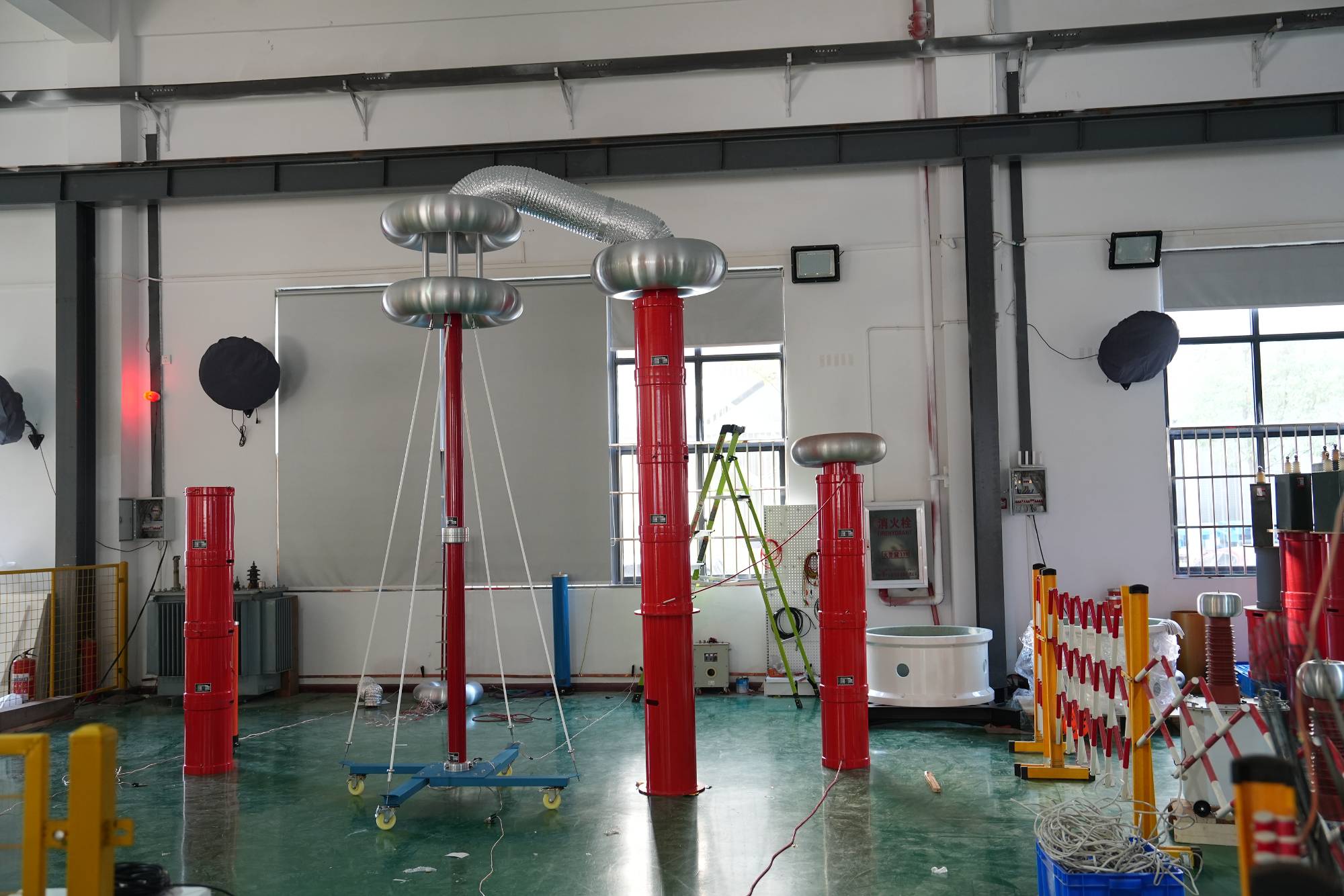
Series resonance of series LCR circuit
2025-10-16When the reactants are equal, series resonance occurs. The inductance reactance (XL) of frequency and inductance is:The capacitance reactance (XC) is composed of:The reactance frequency is directly proportional, and its graph is plotted as a straight line with the frequency (ƒ). The capacitive reactance is inversely proportional to frequency, as shown in the graph where ƒ is the curve. These two quantities indicate that, R, By planning together for the ƒ plot, it can be seen that the intersection of XC and XL is equal, so the graph of (XL-XC) must be on the frequency axis, which is zero.The characteristics of series resonance in LCR circuits.The LCR series circuit is designed to respond to the situation where the resistance (R) and impedance (Z) occur when the frequency of the power source (VS) changes from 0Hz to XC. Firstly, the circuit behaves as a capacitor, and the total impedance (Z) of the circuit falls on a very similar curve to XL-XC.The relationship between individual compone
MORE -
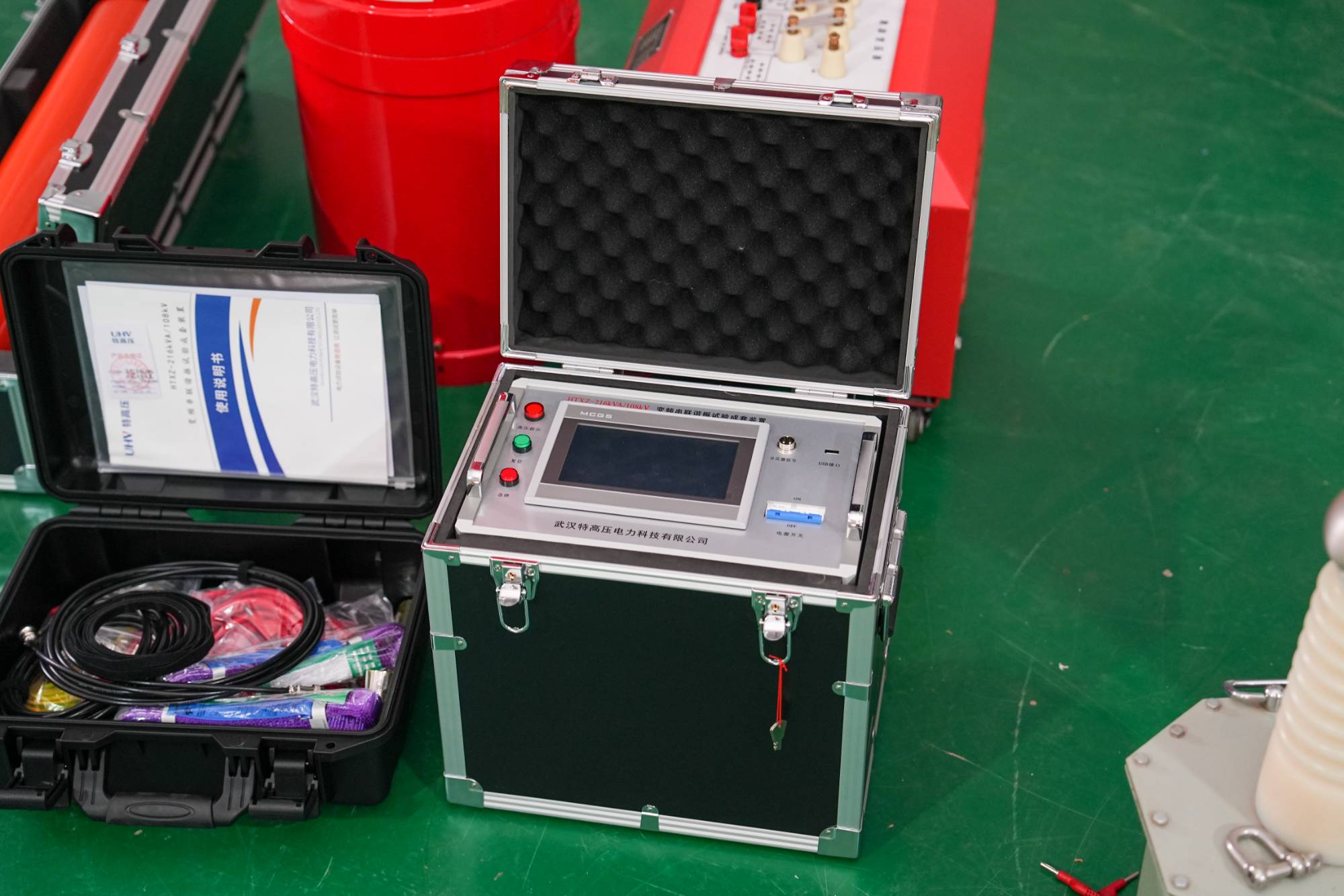
What makes the variable frequency series resonance test device powerful?
2025-10-16In the high-voltage withstand voltage test device, the variable frequency series resonance test device is an ideal choice,. Due to the many advantages of variable frequency series resonance over traditional voltage withstand test devices, series resonance voltage withstand test devices are also highly welcomed by power workers. What makes the variable frequency series resonance withstand voltage test device powerful?The variable frequency series resonance test device has powerful protection functions and is safer than traditional high-voltage withstand voltage testing methods, such as overvoltage, overcurrent, system flashover, zero position start and other protection functions. In addition, the overvoltage and overcurrent protection functions can be adjusted according to user needs. During flashover protection, in addition to the flashover action, the flashover voltage value can also be recorded, making it convenient for users to conduct test analysis. The variable frequency series r
MORE -
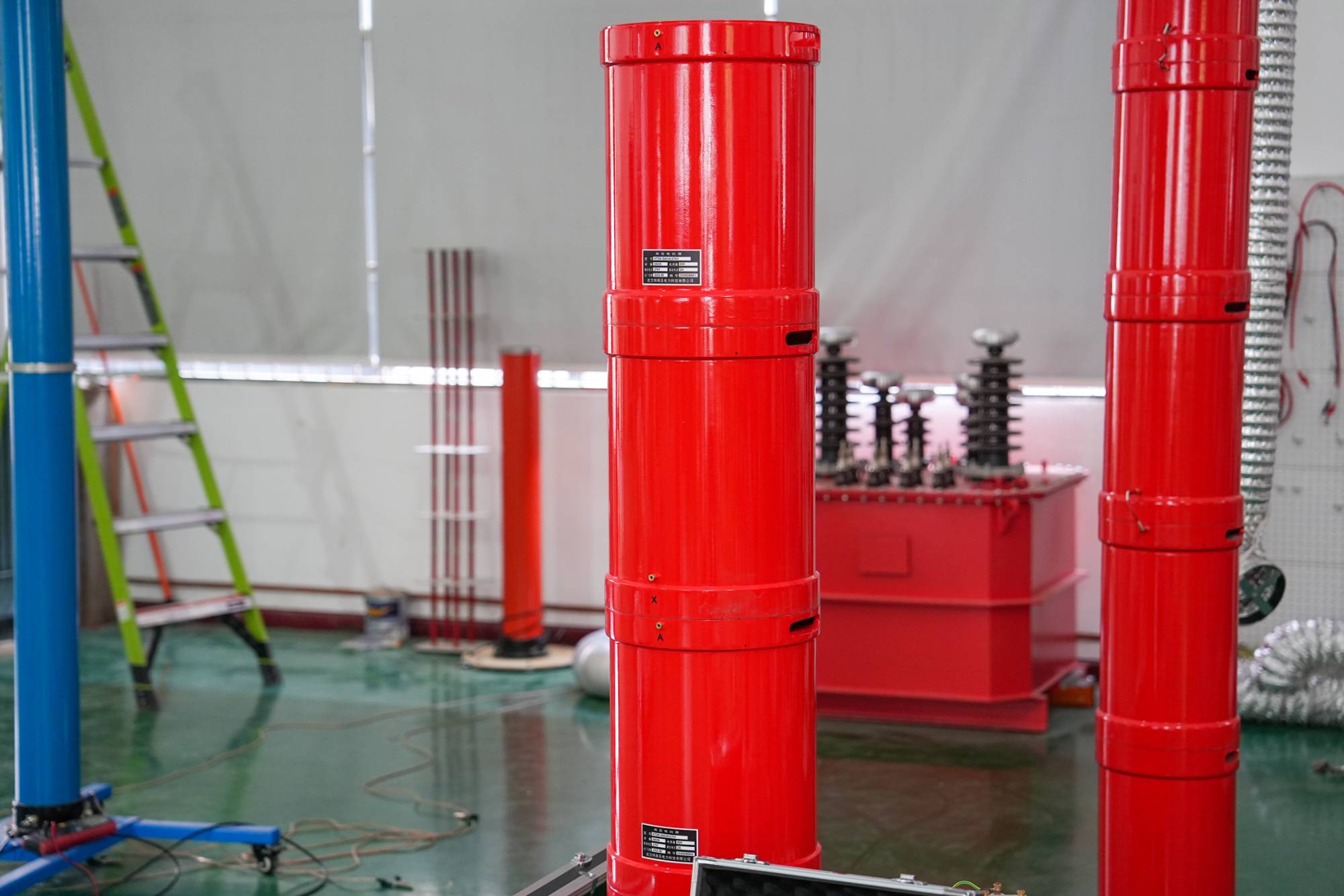
The complete set of equipment for frequency conversion series resonance test is used to conduct AC withstand voltage test on the generator
2025-10-15To evaluate the insulation strength of a generator, the frequency conversion series resonance test equipment and the power frequency AC withstand voltage test are the most effective and direct ways, because the waveform frequencies of the voltage and working voltage in the power frequency AC withstand voltage test are the same, which will have important decisive significance for determining whether the generator can be used. Therefore, the power frequency AC withstand voltage test is a very important test in the generator insulation test.It should be noted that before conducting the AC withstand voltage test, it is necessary to comprehensively analyze and judge other non-destructive testing results such as insulation resistance, absorption ratio, leakage current, etc., and then decide whether the generator can undergo the withstand voltage test to avoid excessive insulation breakdown during the test.How to conduct AC withstand voltage test for series resonant generator, the specific op
MORE -
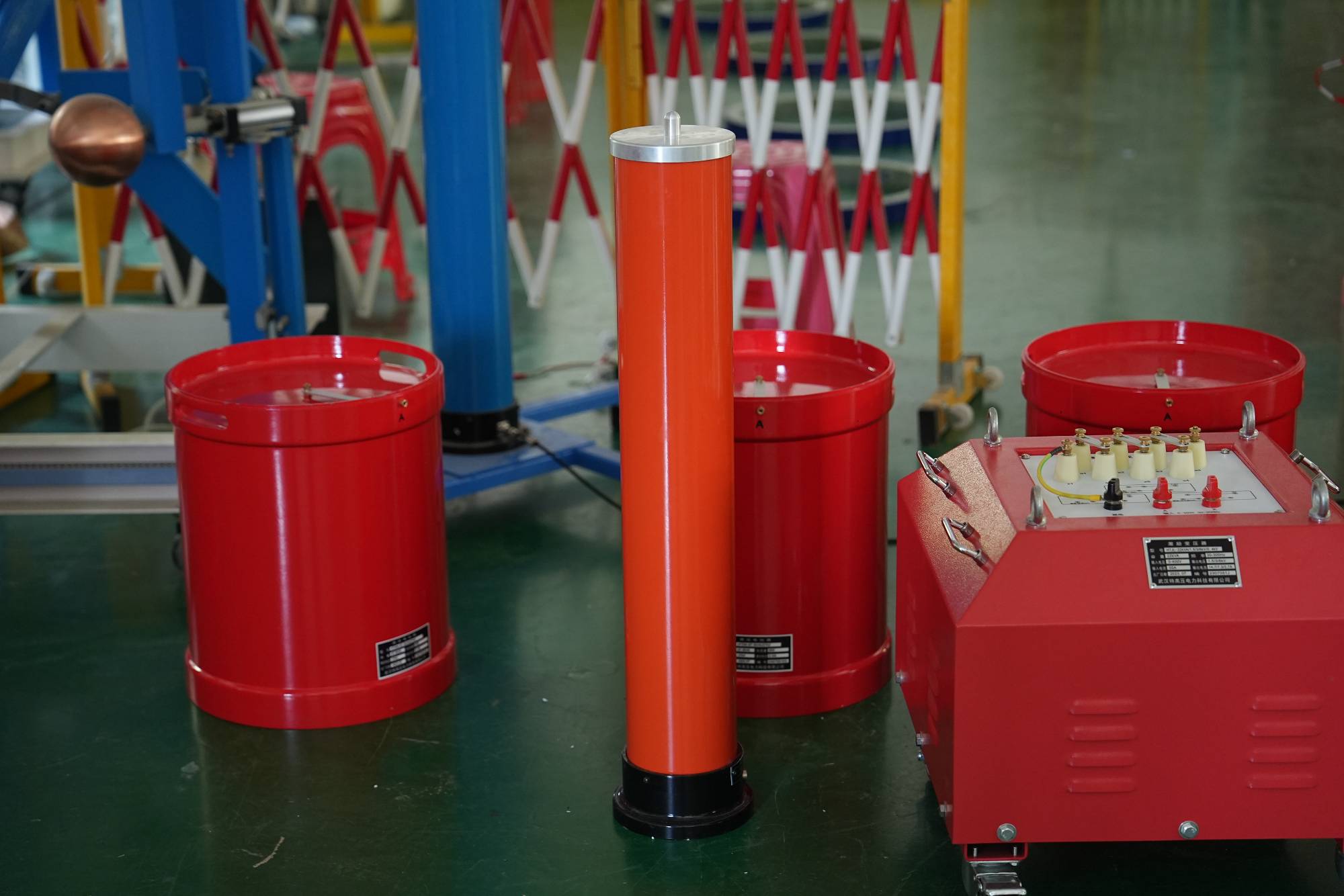
How to use the complete set of frequency conversion series resonance test equipment to quickly find the resonance point?
2025-10-15In practical work, power workers often need to conduct resonance tests on high-voltage power cables to find the resonance point of the cable. Therefore, a complete set of frequency conversion series resonance test equipment is needed. Many people often cannot quickly find the resonance point during use, and sometimes they cannot find it at all, which wastes a lot of time and energy on the test site. So, how to use the frequency conversion series resonance test equipment to quickly find the resonance point? The complete set of frequency conversion series resonance test equipment is preferred for quickly finding the resonance point. Depending on the voltage level of the tested cable, different types of series resonance test equipment need to be selected. The voltage level of the series resonance test equipment generally needs to cover the voltage level of the cable. If the voltage of the equipment is not as high as that of the cable, it is impossible to find the resonance point of the c
MORE -
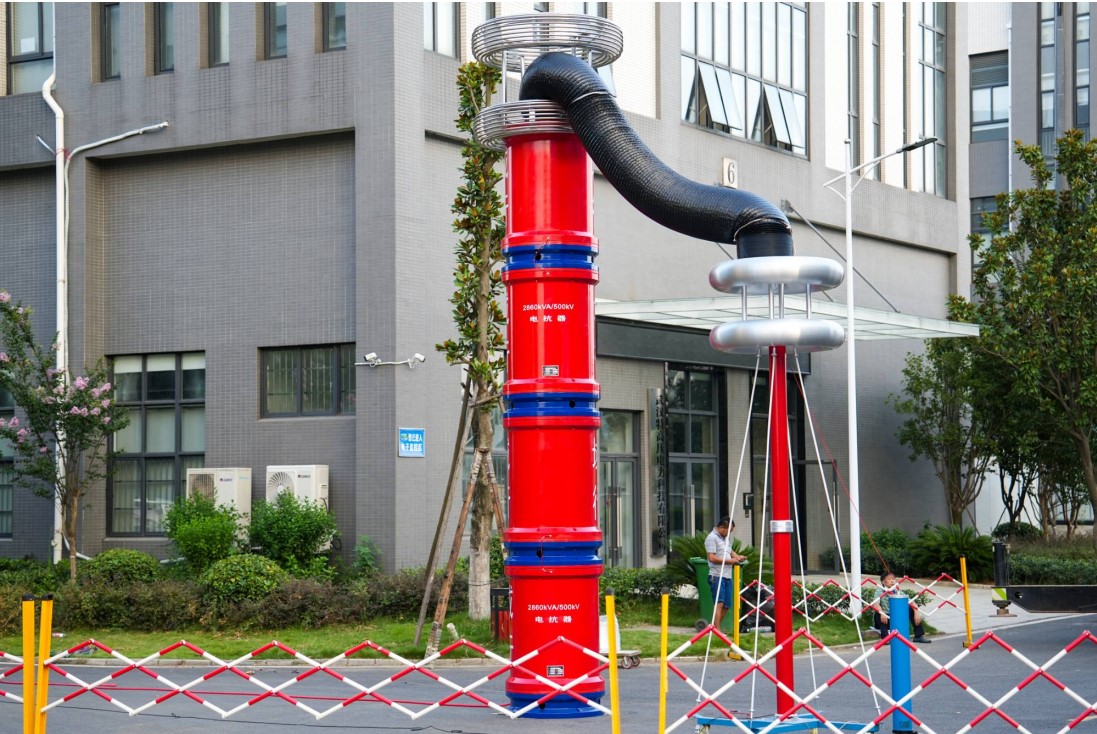
Calculation formula for the complete set of frequency conversion series resonance test equipment
2025-10-15The complete set of frequency conversion series resonance test equipment mainly refers to the voltage and current of the series circuit reaching the same phase, that is, the inductance reactance of the inductor and the capacitance reactance of the capacitor in the circuit are equal, making the circuit exhibit pure resistance characteristics. Under the given terminal voltage, a large current will occur in the circuit, and the active power consumed in the circuit will also be large. This article introduces the formula for the complete set of variable frequency series resonance test equipment.The imaginary part of the impedance of the frequency conversion series resonance testing device circuit is equal to 0. So Z=R+jX, X=0, Z=R, so I=U/Z=U/R.1. Resonance definition: The energy of components L and C in a circuit is equal. When one reactive element in the circuit releases energy, the other reactive element must absorb the same energy. In other words, resonance occurs between the two reacti
MORE -
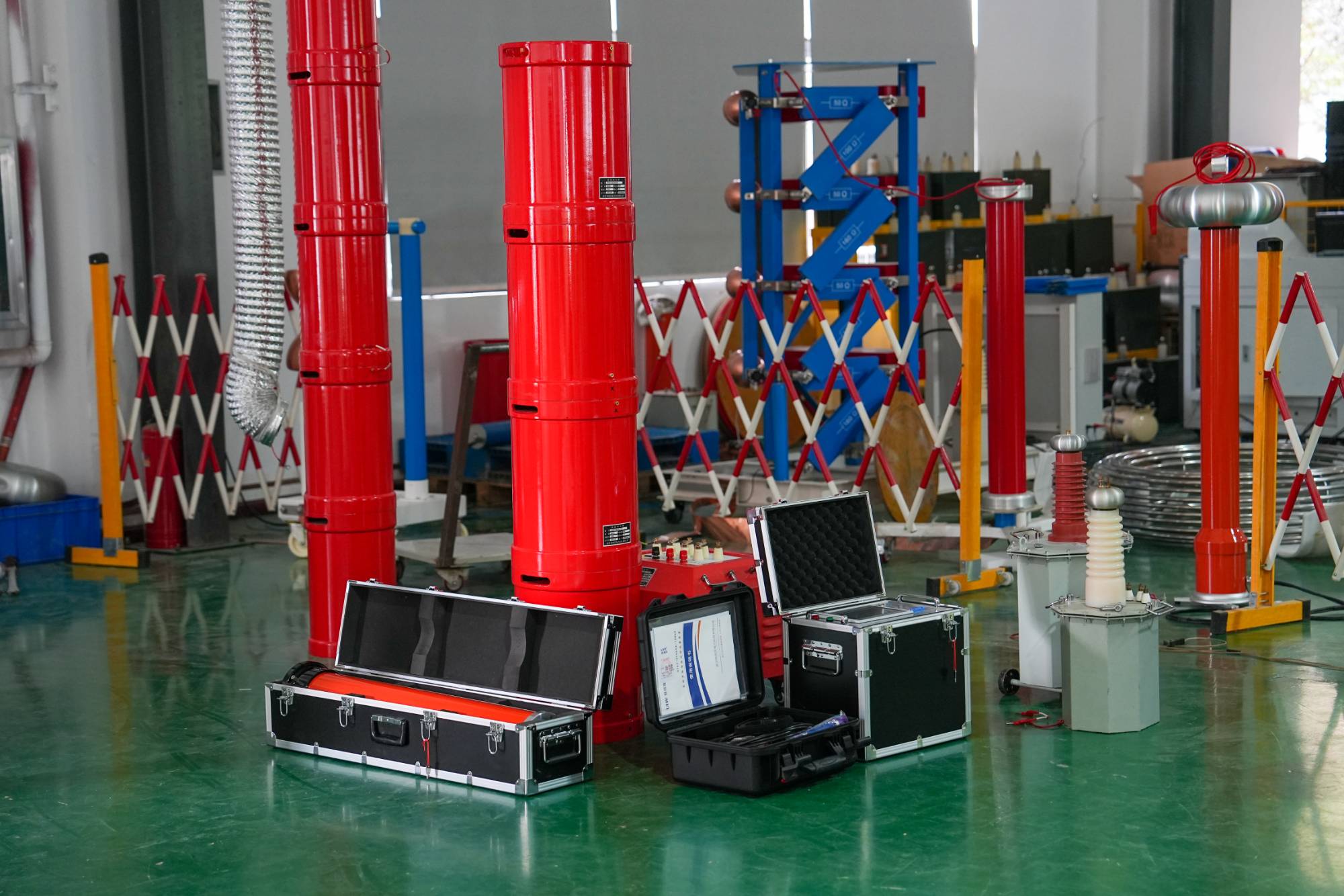
Power equipment testing often uses a complete set of frequency conversion series resonance testing equipment
2025-10-14The complete set of frequency conversion series resonance test equipment is used to change the inductance and test frequency of the testing system, so that the circuit is in a resonant state, and most of the capacitance current on the testing circuit is cancelled out by the induced current on the reactor. The energy provided by the power supply is only a small part of the resonance multiple consumed in the circuit, that is, a part of the resonance multiple of the capacity of the test piece; Therefore, the capacity of the test power supply slowly decreases, and the weight is greatly reduced. The complete set of frequency conversion series resonance test equipment system can be divided into two types according to the adjustment method: regulating type and frequency modulation type.Belonging to the resonant current filtering circuit, it can improve the waveform distortion of the power supply, obtain a better sine voltage waveform, and effectively prevent harmonic peaks from causing false
MORE -
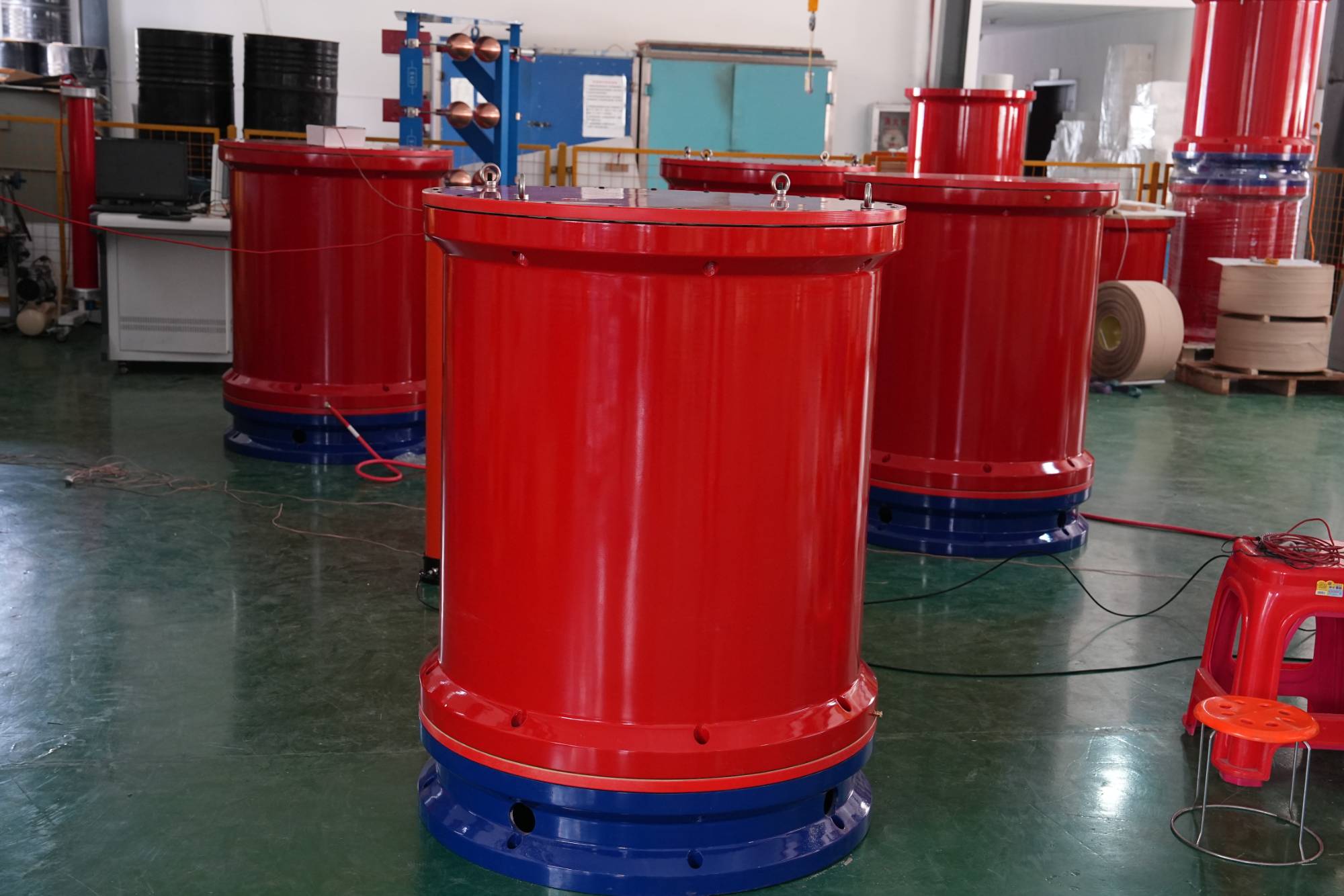
Protection function of the complete set of frequency conversion series resonance test equipment
2025-10-14Before using power cables, a series resonance test must be conducted. At the same time, the complete set of variable frequency series resonance test equipment also has corresponding protection functions. What is the protection function of the complete set of variable frequency series resonance test equipment?Flashover protection: When the tested object experiences a discharge fault, the device will quickly cut off the output voltage and disconnect the power supply. The load of the high-voltage circuit will be released through the intermediate boosting transformer, without causing overvoltage or affecting other equipment. The 'flashover fault' will be displayed on the screen of the console. Overvoltage protection: The complete set of frequency conversion series resonance test equipment can set the test voltage to prevent the test voltage from rising due to external reasons; When the test voltage exceeds the set value, the console will automatically cut off the cycle and prompt
MORE -
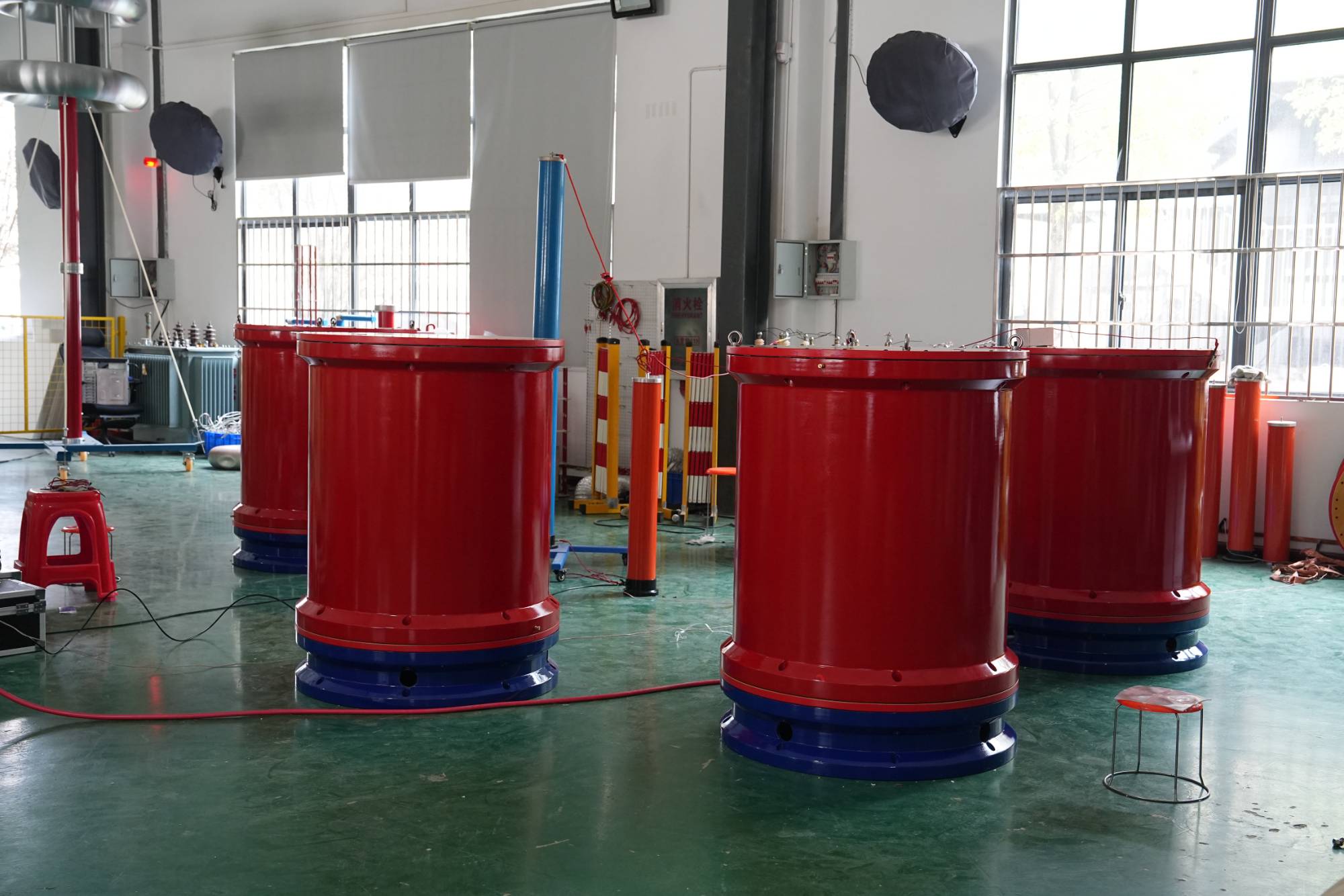
Common knowledge of safe electricity use for the complete set of frequency conversion series resonance test equipment
2025-10-14The testing method of the frequency conversion series resonance test set device is to change the inductance and testing frequency of the testing system to make the circuit in a resonant state. In this way, most of the capacitance current on the test object in the test circuit is offset by the induced current on the reactor. The energy provided by the power supply is only the working power consumed by the circuit, which is 1/Q of the tested capacity (Q is the resonance multiple of the system), greatly reducing the capacity and weight of the tested power supply. The complete set of frequency conversion series resonance test equipment can be divided into two categories: induction type and frequency modulation type. The adjustable inductance resonance test system can meet the withstand voltage requirements, but due to its large weight and poor mobility, it is mainly used in laboratories. The variable frequency series resonance test device is a new type of high-voltage test method and power
MORE -
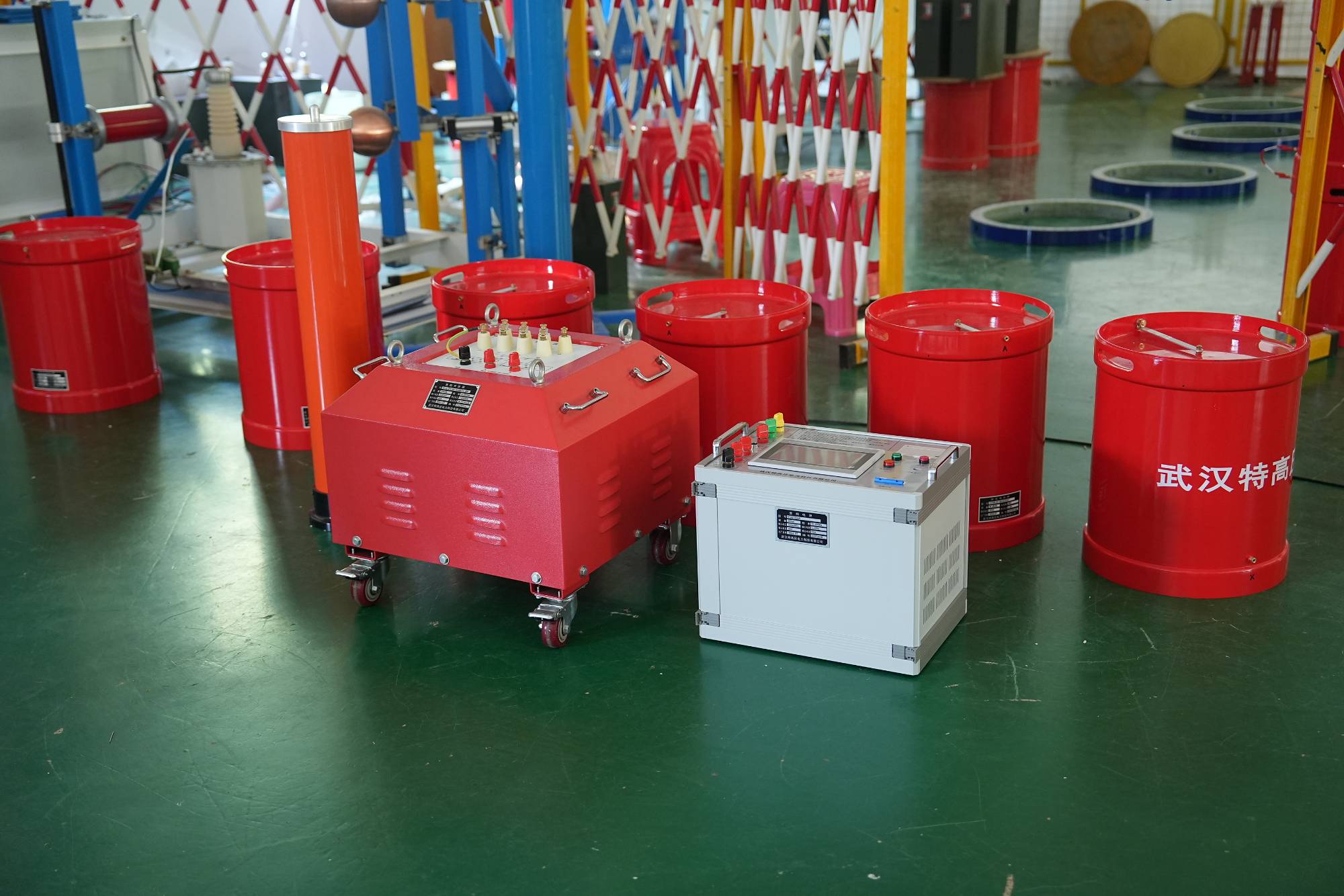
Precautions for testing the complete set of frequency conversion series resonance test equipment
2025-10-13The complete set of frequency conversion series resonance test equipment is widely used in industries such as power, metallurgy, petroleum, and chemical. It can not only handle various specifications of power cables GIS、 Circuit breakers and enclosures can undergo AC withstand voltage tests, and the withstand voltage level of electrical equipment such as large generator sets, power transformers, and transformers can also be tested through certain frequency limitations.In recent years, "urban and rural network transformation", high-voltage cross-linked cables, and GIS (composite electrical appliances) have been widely used, and the capacity and length of cables continue to rise. The previous DC withstand voltage test could not accurately reflect the actual insulation performance of the above-mentioned equipment. In the case of large capacity, ordinary power frequency test equipment is very bulky and not suitable for on-site use. The intelligence and miniaturization of the frequency conv
MORE -
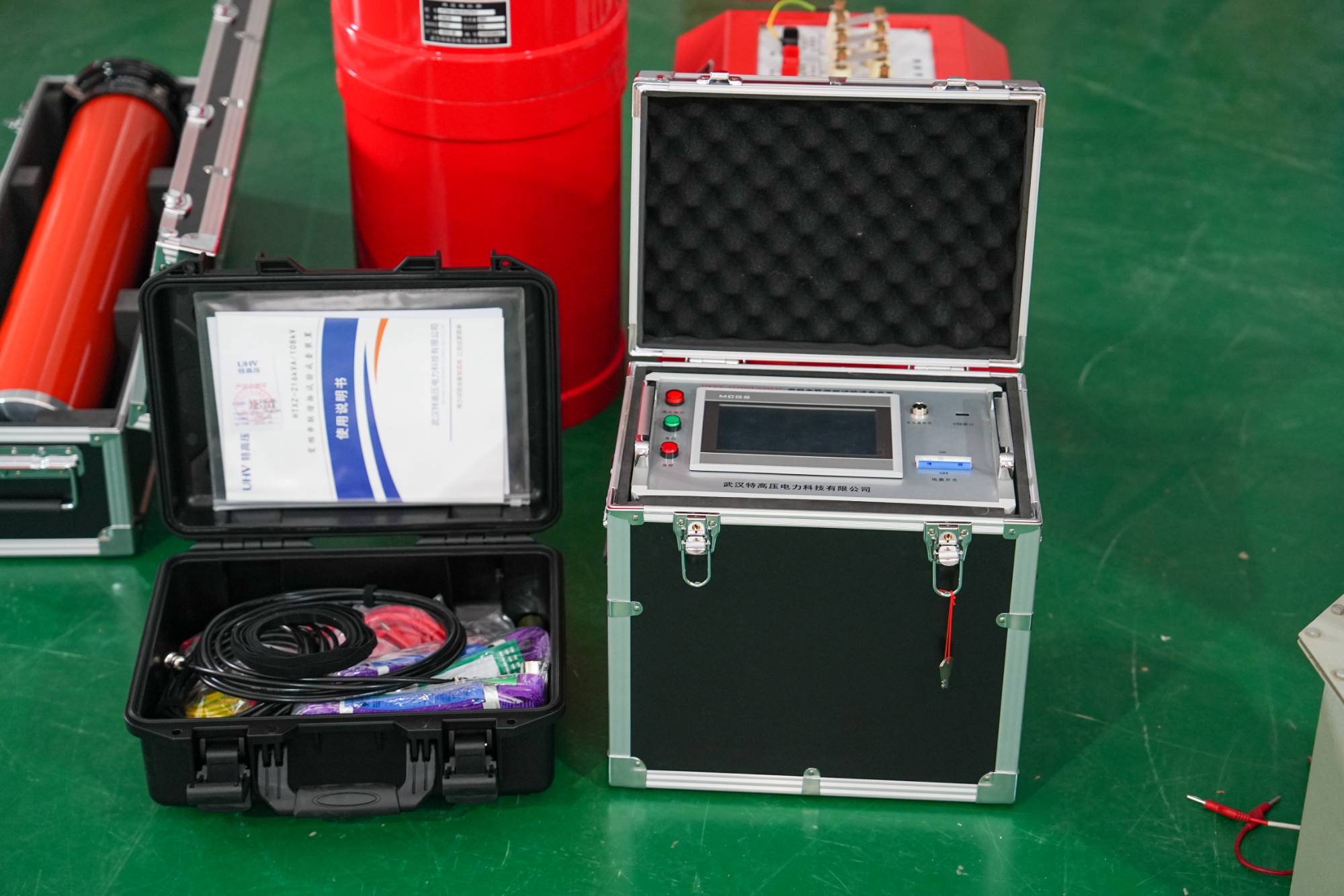
Operation method of the complete set of frequency conversion series resonance test equipment
2025-10-13The complete set of variable frequency series resonance test equipment adopts advanced variable frequency transformation and protection control technology, with reliable performance, comprehensive functions, and simple operation; The complete set of frequency conversion series resonance test equipment is designed for the characteristics of high test voltage and low test current; The complete set of frequency conversion series resonance test equipment has a high degree of automation, small size, and light weight; The weight of each unit in the complete set of frequency conversion series resonance test equipment shall not exceed 40kg, and it is suitable for on-site transportation; The reactor is made of dry-type epoxy casting, which is reliable in operation and easy to handle. It does not require lifting during on-site testing and can be manually installed and tested; The complete set of frequency conversion series resonance test equipment applies the principle of series parallel resonan
MORE -
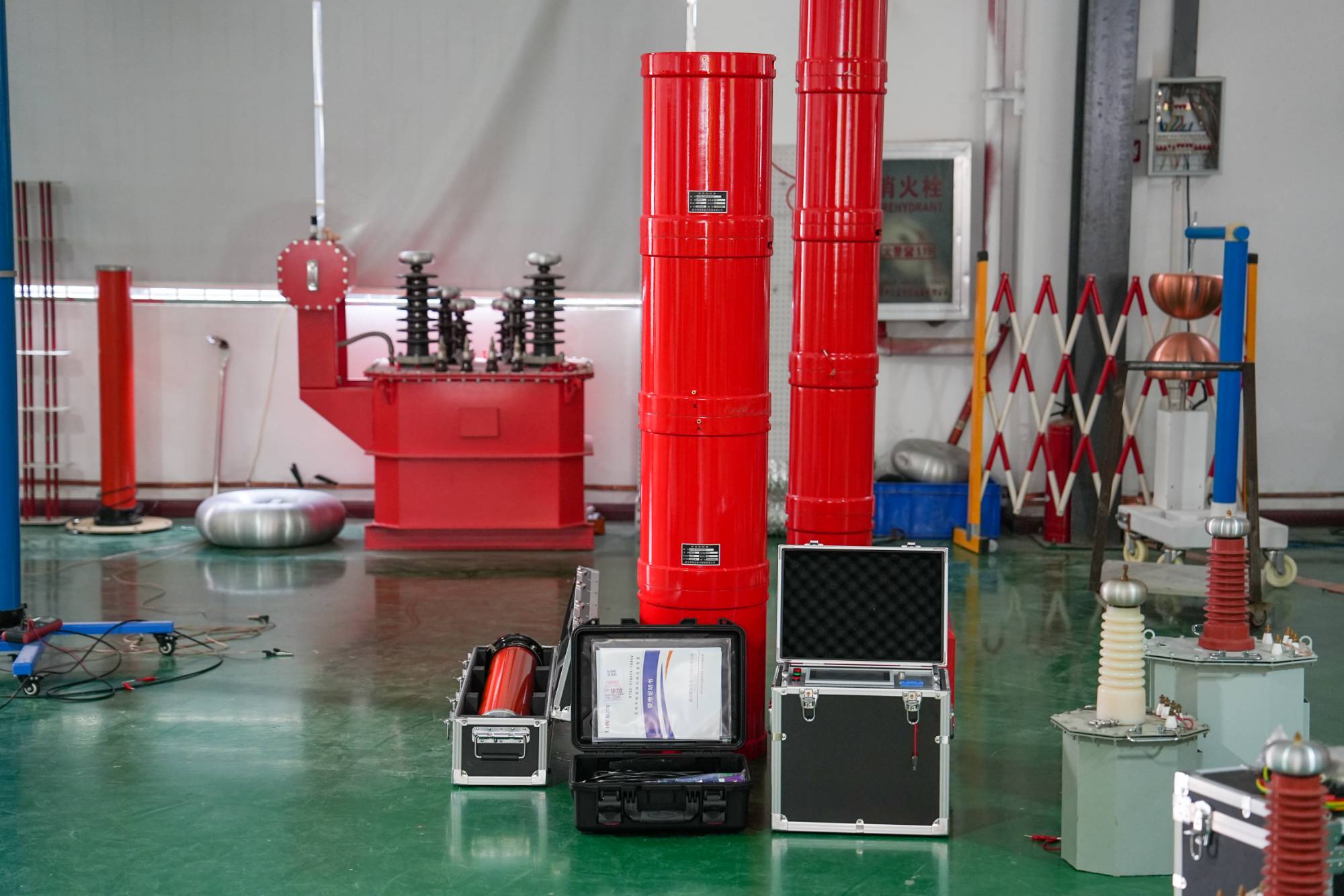
The complete set of frequency conversion series resonance test equipment is in resonance state for filtering
2025-10-13The complete set of frequency conversion series resonance test equipment is based on the working principle of the resonant frequency conversion series resonance test equipment. The AC 220V power supply outputs a frequency conversion voltage of 30-200Hz through the frequency conversion control unit, which is sent to the excitation transformer and boosted to 0-1000V to form a high-voltage main harmonic circuit. The capacitive voltage divider is a pure capacitive type used for measuring the test voltage. Firstly, the variable frequency control unit is fed into the main resonant circuit with a lower voltage Ue through an excitation transformer. When the frequency meets the condition Ω L=1/Ω C, the output frequency of the variable frequency control unit is adjusted, that is, the circuit reaches the resonant state.At this point, under a smaller excitation voltage UE, a voltage UCX several tens of times that of UE can be generated on the tested object Cx. The frequency conversion testing syst
MORE -
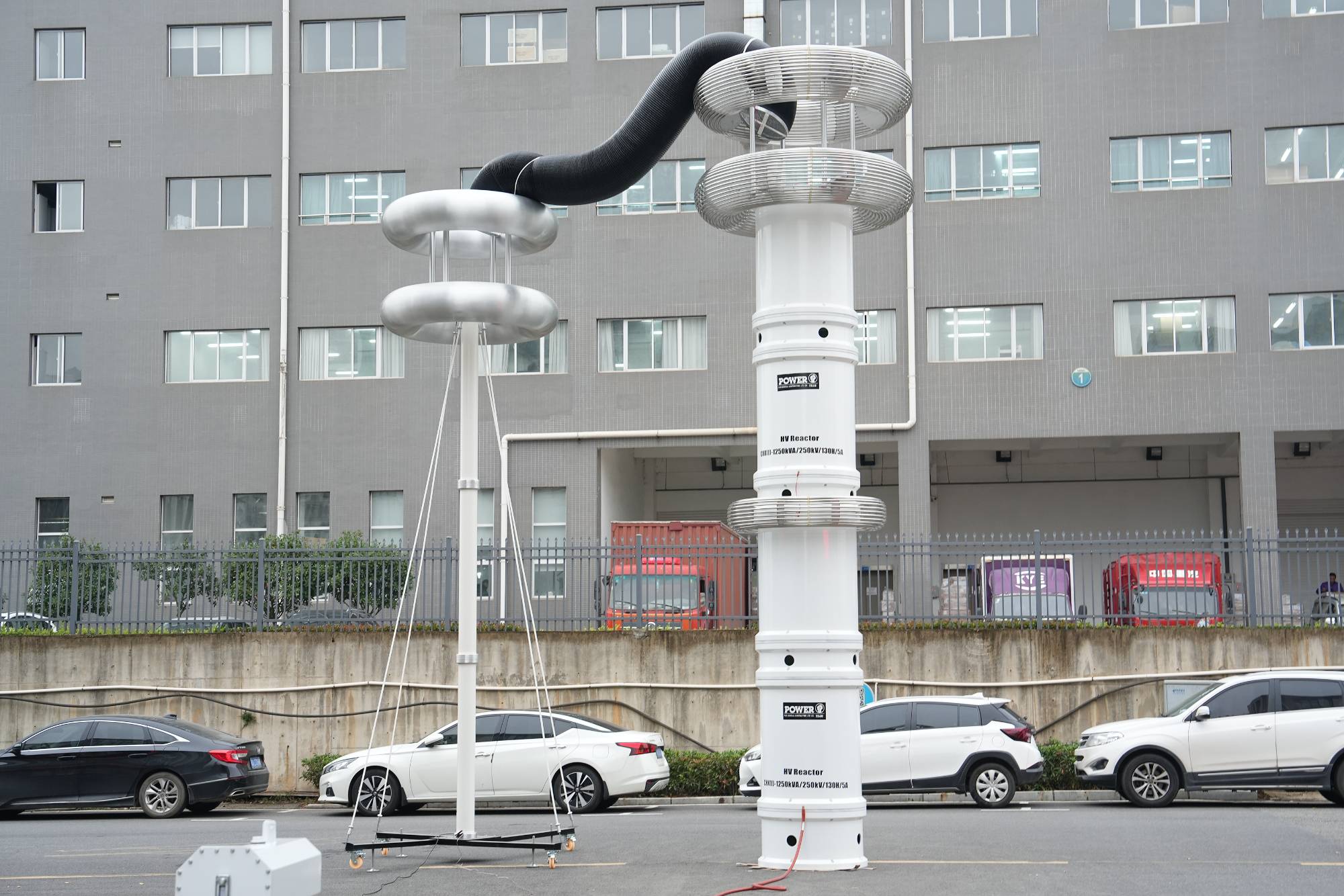
The total resistance of the complete set of frequency conversion series resonance test equipment
2025-10-11The reason why the resistance is not equal to the power supply voltage during resonance is that when resonance occurs, the voltage on the resistance is the sum of the power supply voltage and the voltage of the charging and discharging capacitor. Therefore, the resistance voltage=power supply voltage+capacitor voltage, not equal to the power supply voltage. When a series resonance circuit resonates, the total impedance of the series resonance device is equal to the resistance, and the total resistance of the series resonance is equal to the voltage on the resistance. At this time, there is voltage on both the capacitor and the inductor, and the voltage on the inductor is equal to the voltage on the capacitor, but the voltage direction is opposite. When operating, be careful not to mistakenly think that there is no voltage on the capacitor and inductor, which may cause safety problems.The frequency selection characteristics of a series resonant circuit are usually represented by the Q v
MORE -
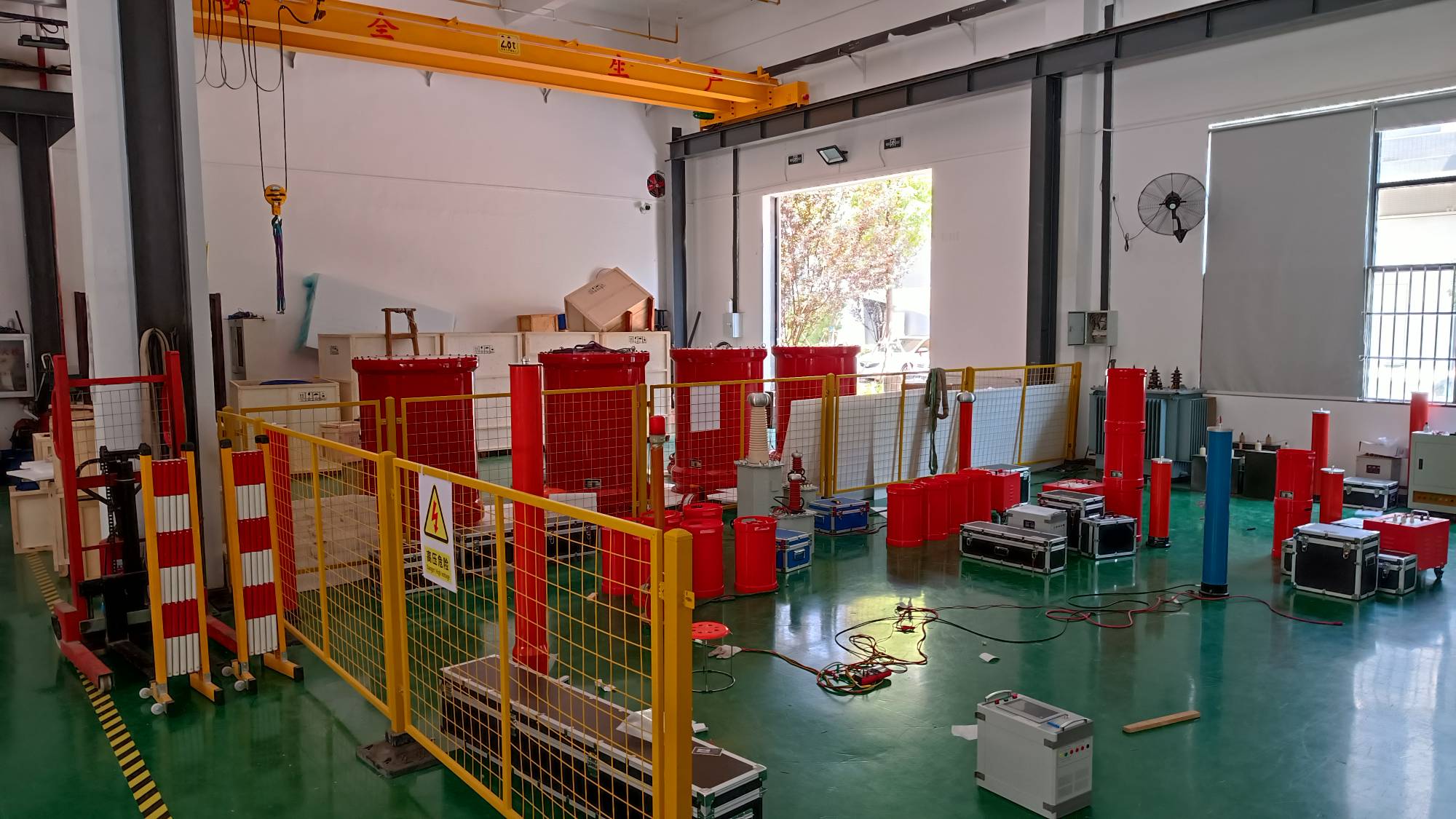
Application of the complete set of frequency conversion series resonance test equipment in voltage withstand test
2025-10-11The resonant withstand voltage test method for the complete set of variable frequency series resonance test equipment is to change the inductance and test frequency of the test system to make the circuit in a resonant state, so that most of the capacitive current on the test sample in the test circuit is offset by the inductive current on the reactor. The energy supplied by the power supply is only the working power consumed in the circuit, which is 1/Q of the capacity of the test sample (Q is the resonance multiple of the system), so the capacity of the test power supply is decreasing and the weight is greatly reduced.The resonant withstand voltage test system of the complete set of frequency conversion series resonance test equipment is divided into two types according to the adjustment method: inductive modulation (VISR) and frequency modulation (VFSR); The adjustable inductance type resonance test system can meet the withstand voltage requirements, but due to its large weight and p
MORE -
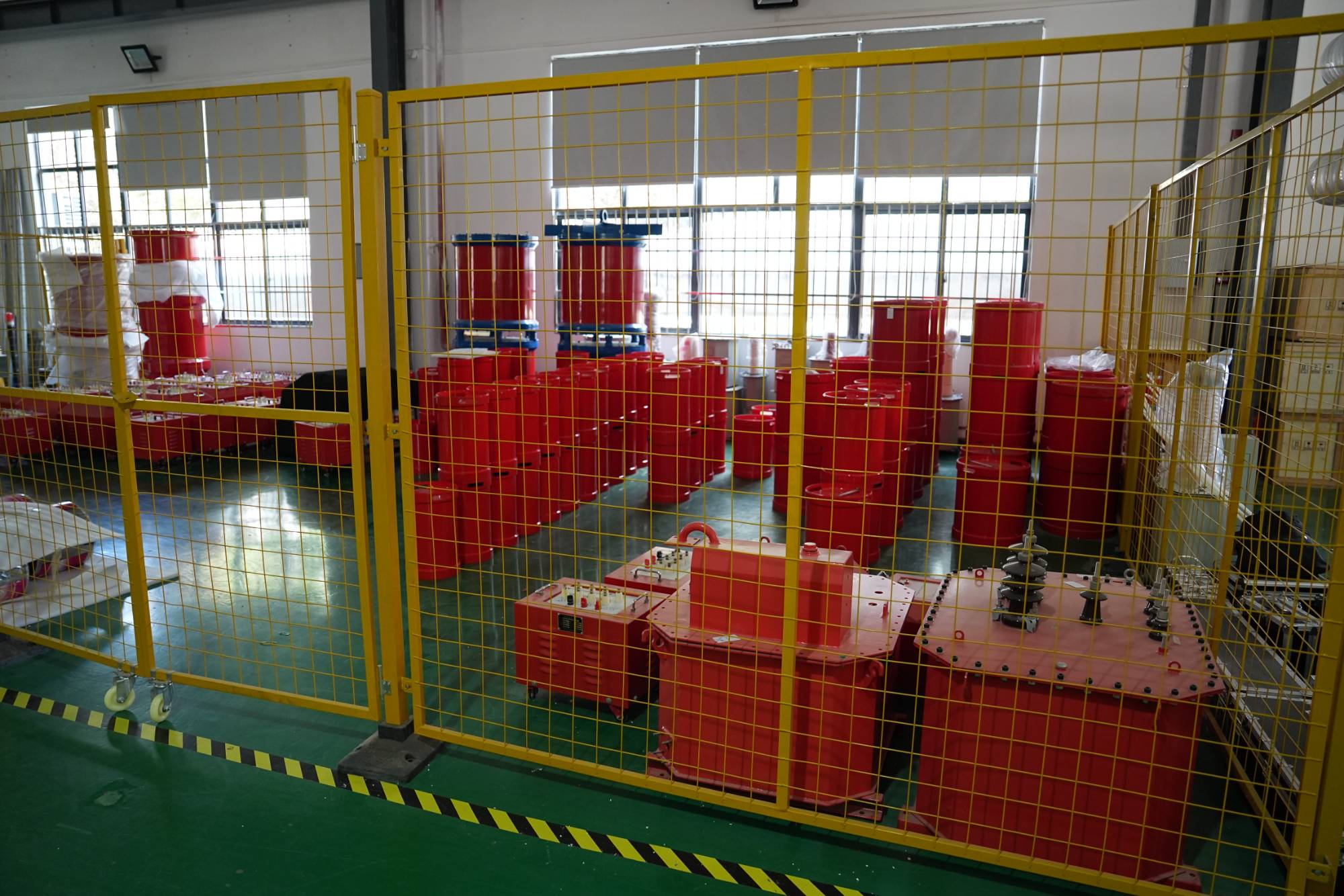
Detailed explanation of AC withstand voltage test for the complete set of frequency conversion series resonance test equipment
2025-10-11AC withstand voltage test is an effective and direct method for identifying the insulation strength of power equipment, and is an important component of preventive testing. In addition, since the AC withstand voltage test voltage is generally higher than the working voltage, the equipment has a large safety margin after passing the test. Therefore, AC withstand voltage test is an important means to ensure the safe operation of power equipment. A complete set of variable frequency series resonance test equipment is generally selected for the AC withstand voltage test.Determination of experimental voltageIn the AC withstand voltage test, the key issue is to correctly select the value of the test voltage, on the one hand, to ensure the insulation level; On the other hand, the test voltage caused by insulation degradation should be considered, and the following factors should generally be taken into account.1. Possible overvoltage values, duration, and frequency on the test sample; If the
MORE









